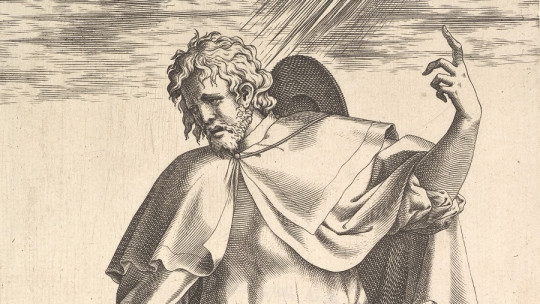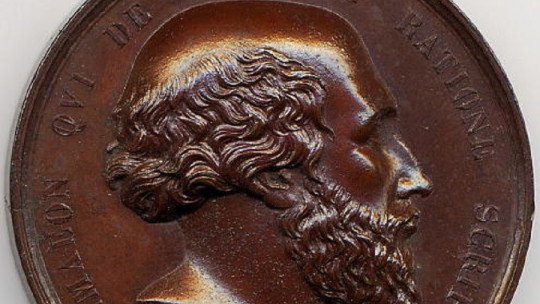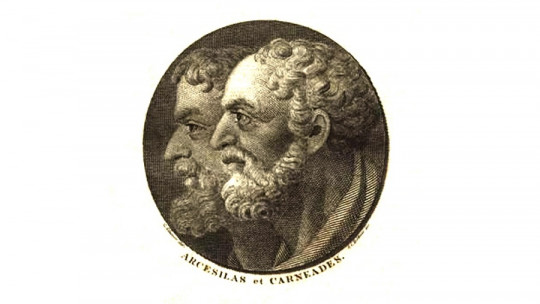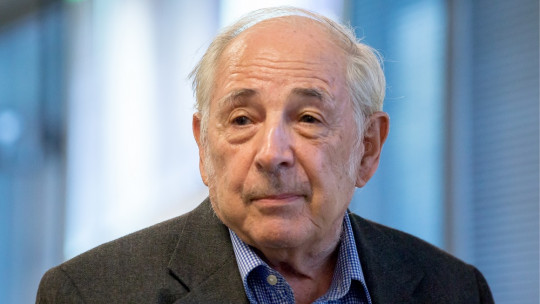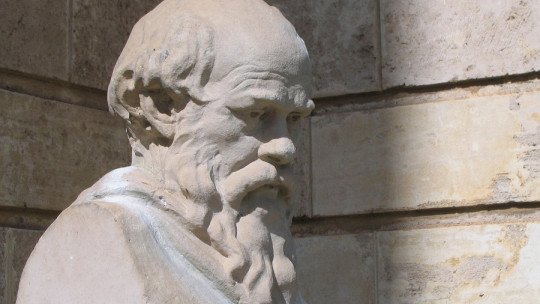The figure of Empedocles of Agrigento is shrouded in legend because, in addition to being a philosopher, he was widely known in his time as a skilled doctor.
These doctor’s skills were still in tune with the knowledge of Classical Greece about diseases and illnesses of the body, since his medical techniques were intertwined with the art of magic and shamanism and, of course, with his philosophy.
Although not much is known about his life, his philosophy is known in depth, which has had an impact to this day regarding what elements or “roots” make up matter. Let’s see here what his life and work was like through a biography of Empedocles
Summary biography of Empedocles of Agrigento
Empedocles of Agrigento born in Akragas (also called Agrigento), Sicily, probably between the years 483 and 495 As is common among pre-Socratic philosophers, it is not possible to accurately establish the date of his birth, although indirect evidence suggests that 495 BC is accepted as the year of his birth.
Practically nothing is known about his childhood, although it is known that in his childhood his native Agrigento enjoyed great power and fame thanks to the tyrant Theron (488-472). He was born into an illustrious family, receiving a careful education and, thanks to this, he became head of the democratic faction of his native Agrigento. Thanks to having a good social position and gaining popularity as a doctor-thaumaturgist and scientist, he was able to occupy important positions in public life.
It is known that Empedocles motivated political changes during his lifetime After the death of Theron and the rise to power of his son Thrasideus, the tyranny ended with the latter losing power. It was then that Empedocles, a defender of democracy, encouraged the parties fighting for power to stop the conflict and cultivate political equality. It is perhaps for this reason that, despite achieving great fame among his fellow citizens, he also made many enemies, which is why he would end up going into exile in the Peloponnese.
The death of Empedocles, as with his own birth and figure, is shrouded in mystery. Several anecdotes are told about his death, the best known being that he threw himself into the bowels of the Etna volcano in 423 BC. C. It is said that he immolated himself in this way so that he could acquire fame among the living and be recognized as a god by dying in such an epic way. However, this story was discarded by the historian Hippobotus.
Another legend says that, after celebrating a sacrifice in a field in Pisianax, all his guests, including his disciple Pausanias, left the place, except Empedocles, who stayed there. The next day the philosopher was nowhere to be found and some servant said he heard a voice calling him, and then saw a heavenly light. After this, Pausanias determined that the time had come to praise him as if he were a god.
As impressive as these two stories are, the truth is that The most reliable information about how Empedocles of Agrigento died comes from the Greek historian Timaeus of Taormina This maintains that Empedocles of Agrigento died in the Peloponnese, probably in the year 423 BC, exiled and living far from his native Sicily at the age of 60.
Thought and career as a philosopher
This Greek philosopher and poet was the first of the thinkers of pluralist eclecticism, who tried to reconcile opposing visions of reality that Parmenides and Heraclitus had arrived at.
The four roots of matter
Before the arrival of the great Socrates on the Hellenic philosophical scene, Greek philosophy had assumed the existence of a common constitutive principle in nature, called the arche.
Philosophers such as Thales, Anaximander and Anaximenes, the three of Miletus, together with the school of Pythagoras, wanted find this principle in different natural phenomena and aspects Some saw it in concrete substances, such as air, water, while others saw it in abstract or formal nature, such as the indeterminate, proposed by Anaximander, or the number, proposed by the Pythagorean sect.
As these ideas developed, they came closer to the antithetical conceptions of reality of Parmenides and Heraclitus. For Parmenides, the real is one and immutable, its transformation being a simple appearance. On the other hand, for Heraclitus it was the incessant becoming, the constant change, the true nature of the real. Empedocles saw in these two positions two ideas that were perfectly in tune and that explained the behavior of the natural world.
Thus, the figure of this philosopher represents the first attempt to harmonize these two positions, something that Anaxagoras and atomists such as Leucippus and Democritus would also try to combine. They all aspired to an eclectic synthesis, proposing arché not as a single element or type of energy, but as a plurality of them or a set of particles These elements had the ability to remain unchanged.
In his works Empedocles establishes the necessity and perenniality of being. For this, he established four “roots” or “rhicomata” as constitutive principles of all things: water, air, earth and fire. It is these four roots that correspond to the principles or arche proposed by several philosophers prior to Empedocles. Thales saw how I arched water, Anaximenes the air, Xenophanes the earth, and Heraclitus the fire.
Empedocles differs from these philosophers in that it is not that the substance or arche becomes all things that exist and to be, but that it is the combination in different proportions of these four roots which results in the different materials and living beings of reality It also highlights the idea that those four roots remain what they are, regardless of how they are combined. The elements that constitute matter remain unchanged, no matter how much the being or object they constitute changes.
The change in the proportion and quantity of these substances is the implication of two cosmic forces, which this philosopher called Love and Hate. Love is the force of attraction, which tends to unite the four elements, ensuring that what is different can be held together. On the other hand, Hate acts as a force of separation from that which is similar.
When Love totally predominates, a perfect sphere is generated, all of it equal and infinite Upon reaching this perfection, Hate begins to act, undoing all this harmony until achieving the most absolute separation, which would be represented in the form of the most erratic chaos. In the face of this chaos, Love intervenes again, uniting everything again. In this way, these two forces work cyclically, giving life to the various forms of matter in the cosmos, generating order and disorder.
About nature and reincarnation
Empedocles dedicated a great interest to the observation of natural phenomena, contributing to the knowledge of his time about botany, zoology and physiology. Furthermore, he exposed very novel concepts about the evolution of living organisms and blood circulation. Curiously, This philosopher believed that thought was in the heart an idea that was long accepted by medicine.
His ideas about the evolution and transformation of all living beings give rise to the theory of metempsychosis. According to this view, living beings atone for their crimes through a series of reincarnations. According to Empedocles, people have been various things before living in our body, and we could even have been other men and women. According to his vision, only men who manage to purify themselves will be able to escape the cycle of reincarnations, and return to live in the world of the gods.
Plays
To this day only a few writings of Empedocles of Agrigento are known. Among the most notable are the political writings, the treatise About medicinehe Proem to Apollo, Purifications and the poem About Nature. The latter is incomplete, since of the 5,000 verses that the work consisted of, only about 450 have been recovered. All these works were written in the form of poems
The way Empedocles describes the world and how he sees it seems to have a very strong influence from Parmenides, a Greek philosopher whom he met in his hometown of Elea.
Influences on other thinkers
The name of Empedocles, although famous, is not that of one of the great figures of Greek philosophy, but His theory of the four roots would end up being very important to Western thought for more than twenty centuries after his existence Aristotle would adopt his theory, changing the name “roots” to “elements,” and this theory would be the most accepted to explain what matter was like until the 18th century.
It was during that century that, thanks to the founding of chemistry as a modern science by the French chemist, biologist and economist Antoine Lavoisier, it would be discovered that, in fact, matter was made up of elements. However, there were not four, but hundreds of them that made up the matter. In fact, the four original elements were not pure, since water was made of hydrogen and oxygen, air was a very disparate mixture of gases, earth had an infinite number of elements and fire was energy in the form of plasma.
Among the thinkers closest to his time we have Plato , who helped him formulate a theory about vision. In accordance with Empedocles’ idea that like is known by like, both postulate that there is fire within us and it is similar to the fire outside. This fire flows subtly and continuously through the eye, allowing vision. Aristotle pointed out that Plato’s theory of the soul coincides with that of Empedocles, where the soul is composed of the four roots that make up matter.
Coming to more modern times and arriving in Germany we have the lyric poet Friedrich Hölderlin and the philosopher Arthur Schopenhauer Hölderlin dedicates a work to the Greek philosopher, with his “The Death of Empedocles”, published between 1797 and 1800. Schopenhauer would have appreciation for the figure of Empedocles, taking his theory on Love and Hate and the way in which these two forces They structure reality, relating it to their idea of Blind Will as the principle of all reality and destiny.
Friedrich Nietzsche also has a special interest in the figure of Empedocles He considers the Greek to be a pessimistic thinker, but one who makes active and productive use of pessimism. His efforts are oriented towards achieving unity, through the forces of Love in various areas of life, especially in the political and moral spheres.
Sigmund Freud, in the same vein as Schopenhauer, would consider Empedocles a very classic predecessor of his modern theory on Eros (love) and Thanatos (death) in his work “Terminable and Interminable Analysis.” Although Freud himself highlights that, although the Hellenic philosopher was based on a “cosmic fantasy”, Freudian theory claims a certain biological validity.

